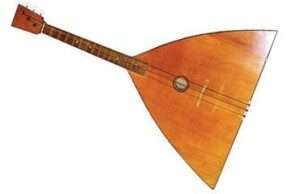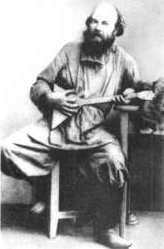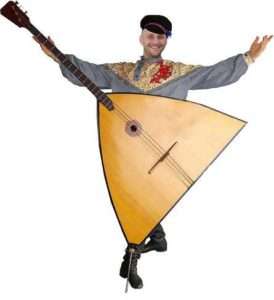
Balalaika history
Balalaika – the soul of the Russian people. Three strings touch millions of hearts. This is a Russian folk plucked instrument. The technique of sound production is rattling: hitting all the strings with your fingers at once. But is Russia really the birthplace of the instrument?
Origin
According to one version, she is of Turkic origin. “Bala” in Turkic means “child”. Playing on it calmed the child.  Russia was under the Mongol-Tatar yoke for 250 years. Perhaps the conquerors brought to the country tools that were the distant ancestors of the balalaika. According to another version, the name is associated with the manner of playing the balalaika. It was defined as balakan, joker, balabolstvo, strumming. These are all related words. From here came the attitude to the instrument as a frivolous, peasant.
Russia was under the Mongol-Tatar yoke for 250 years. Perhaps the conquerors brought to the country tools that were the distant ancestors of the balalaika. According to another version, the name is associated with the manner of playing the balalaika. It was defined as balakan, joker, balabolstvo, strumming. These are all related words. From here came the attitude to the instrument as a frivolous, peasant.
The first written mention of the balalaika dates back to the end of the 17th century. Even 3 centuries ago it was hard to imagine that this musical instrument would proudly ascend the stage of concert halls. In the middle of the 17th century, Tsar Alexei Mikhailovich the Quietest issued a decree where he ordered to burn horns, harps, domras. In his opinion – “demonic vessels.” And whoever does not obey is ordered to be sent into exile.  Buffoons liked to play on domra. They sang satirical songs, ridiculing the nobles and the clergy. Why were they persecuted? After the ban, domra will simply disappear by the end of the 17th century. A holy place is occupied by a new instrument with a long neck and two strings. Not a single national holiday was complete without a balalaika. True, her appearance was not the same as today. Peasants made such a work of art from any materials at hand. In the north, these were dugout wooden ladles with gut strings.
Buffoons liked to play on domra. They sang satirical songs, ridiculing the nobles and the clergy. Why were they persecuted? After the ban, domra will simply disappear by the end of the 17th century. A holy place is occupied by a new instrument with a long neck and two strings. Not a single national holiday was complete without a balalaika. True, her appearance was not the same as today. Peasants made such a work of art from any materials at hand. In the north, these were dugout wooden ladles with gut strings.
It is believed that the first balalaikas had a round shape. Then spatulate. The variety of sizes and shapes was amazing. Gradually, a triangular shape developed. Craftsmen made balalaikas from wood without a single nail. All its existence, this triangular songstress, was constantly changing.
Triumph at 18, followed by almost complete oblivion in the 19th century. Balalaika was dying.
The heyday of the balalaika
It was resurrected from oblivion by a nobleman, a great enthusiast Vasily Andreev. He decided to modernize the instrument. Everything turned out to be not so simple. Violin makers were ashamed to touch it. The high society despised the balalaika. She was the entertainment of the peasants. Andreev found the masters. He achieved learning to play and created his own ensemble.
In 1888, the ensemble performed for the first time under the direction of Andreev in St. Petersburg, in the hall of the Credit Assembly, already on balalaikas improved by him.  This happened with the assistance of Emperor Alexander III. The tool has been exalted. A new round of its development has begun. The balalaika has become not only a folk, but also a concert instrument. For him, they began to write the most difficult works. Not a trace of a frivolous image remained. From a primitive strummer, the balalaika gradually turned into a beautiful professional instrument.
This happened with the assistance of Emperor Alexander III. The tool has been exalted. A new round of its development has begun. The balalaika has become not only a folk, but also a concert instrument. For him, they began to write the most difficult works. Not a trace of a frivolous image remained. From a primitive strummer, the balalaika gradually turned into a beautiful professional instrument.
Did Vasily Andreev, who created the balalaika almost from scratch, suspect what possibilities lie in an instrument conceived to perform folk music? Today’s balalaika lives far beyond its traditional genres. Never ceases to amaze with the possibilities of only three strings.
Now she stands at the forefront of the development of Russian culture. Everything is possible to play music on it. From folk music to classical music. Playing the balalaika deeply and firmly sinks into the soul, causing delight. Ease of play and a wide range make it a unique, inimitable instrument of the people.





